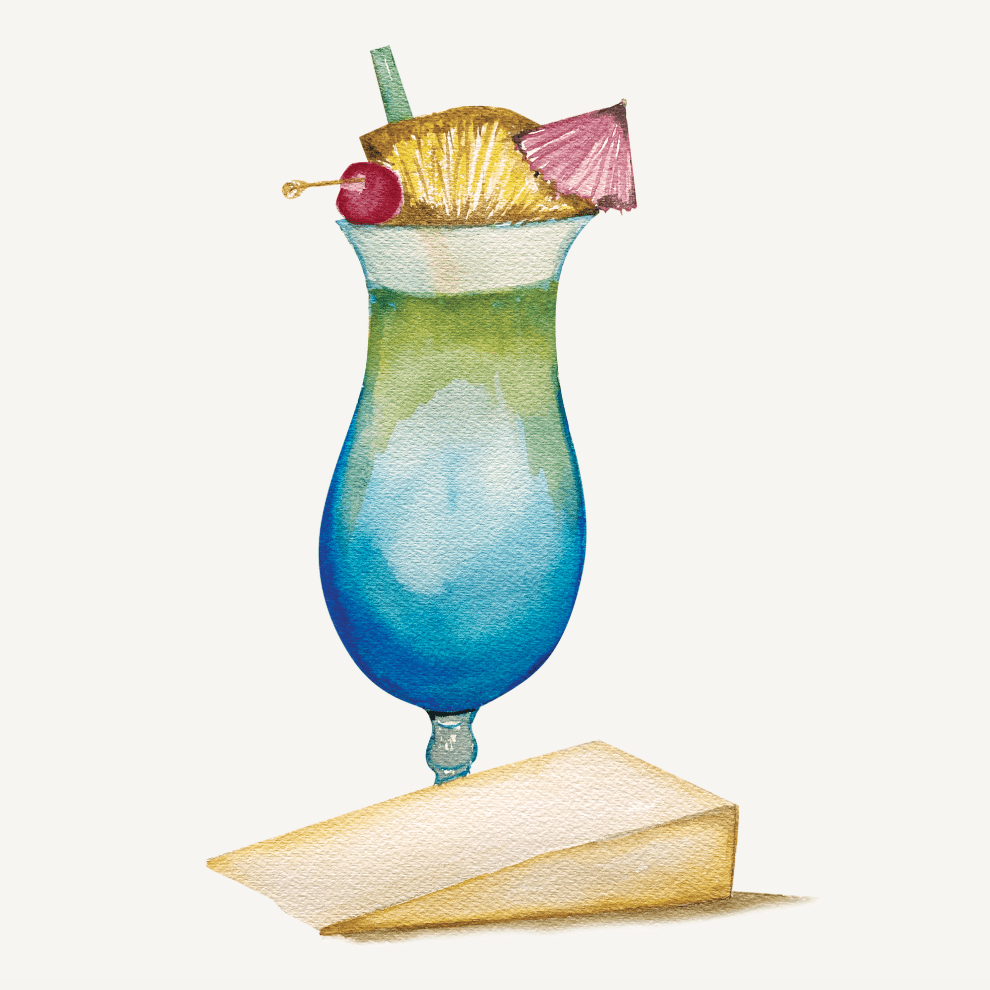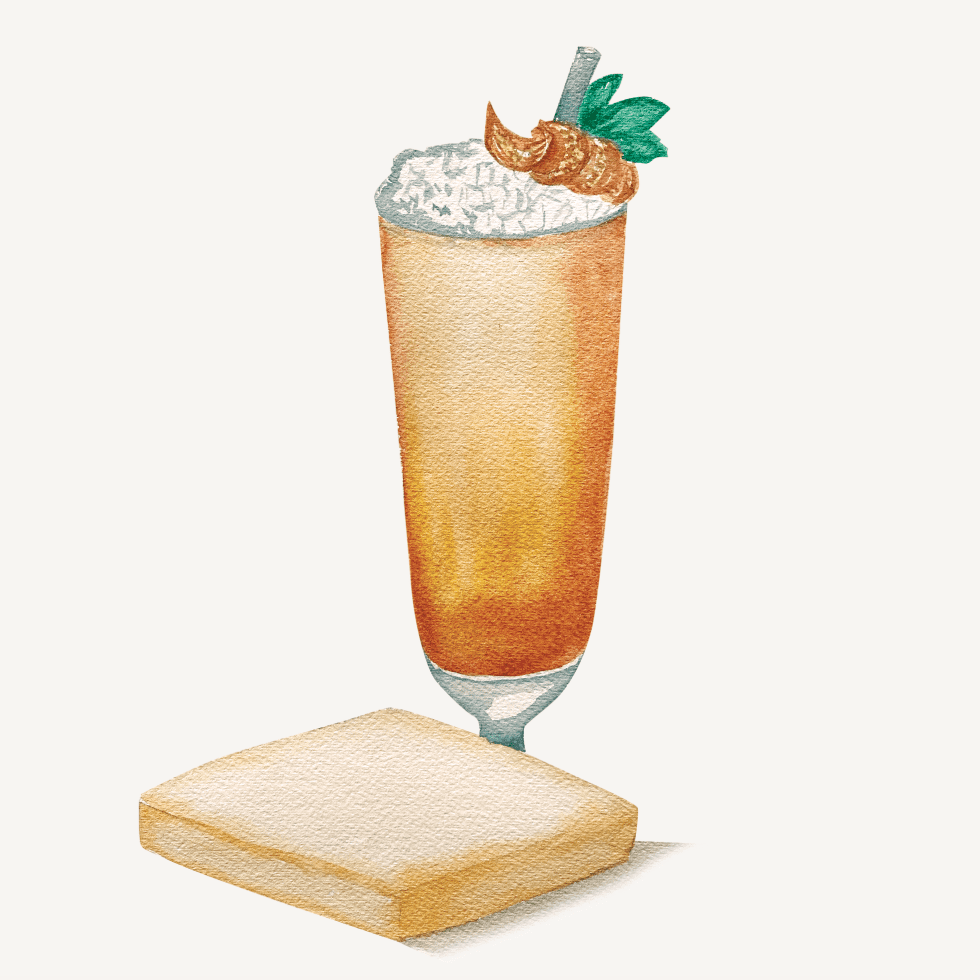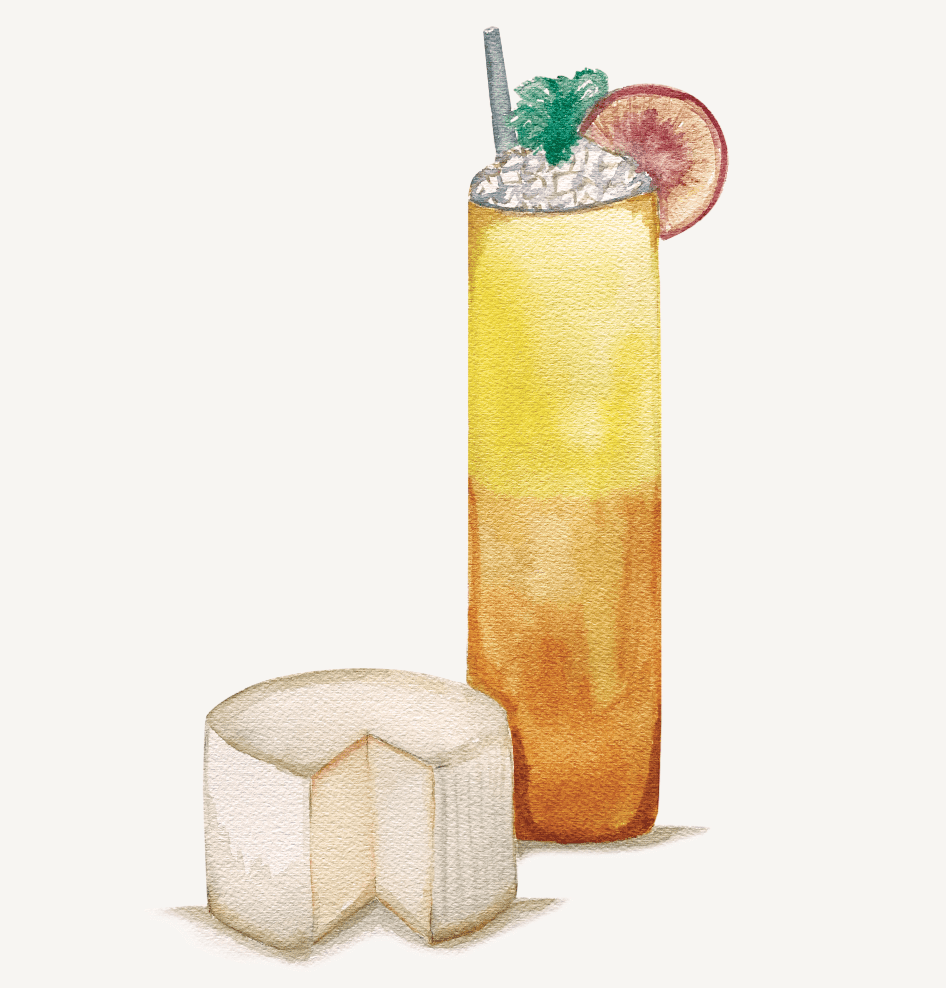
One of the first words that comes to mind regarding tiki is “escapist.” A cocktail bursting with flavors of pineapple, coconut, and orange flower has the ability to transport the drinker immediately to some jewel of a tropical island, where things like work emails and calories don’t exist. But as American consumers have grown more and more aware of where the things they enjoy come from, the truth behind tiki has been getting more attention.
“The [tiki] genre itself is rooted in colonialism and imperialism,” says Samuel Jimenez, a hospitality professional and co-founder of Pasifika Project, an organization that provides a platform for people of Oceanic descent in the hospitality industry. “To me, non-appropriative tiki doesn’t exist.”
A quick history: In 1934, Ernest Raymond Beaumont Gantt (later self-styled as Donn Beach) opened a bar in Los Angeles and festooned it with souvenirs he had collected during his travels throughout the South Pacific. By 1937, Don the Beachcomber—as the bar was eventually named—was a kind of fantastical, experiential watering hole that served rum-soaked concoctions by the gallon, the contents of which were a closely guarded secret. Tiki is the name of the first man in Mori mythology, and it seemed to Gantt like a fitting—and fittingly out-of-touch—label for the world he had concocted.
Gantt is credited with inventing iconic tropical-flavored drinks like the Zombie and Planter’s Punch, which have no real origins in Oceanic cultures but are still widely categorized as “tiki” on cocktail menus the world over. Gantt’s appropriated ideas of the South Seas aesthetic were soon co-opted by others who brought tiki drinks, barware, decor, and food—really, re-tooled traditional Cantonese dishes—all the way to the East Coast and beyond.
Tiki enjoyed its heyday during America’s post-World War II prosperity, which is when more-is-more drinks like the Mai Tai and Fog Cutter became cocktail party staples alongside cheese balls and pineapple upside-down cake. Like all fads, tiki faded out of fashion sometime during the Cold War, but has enjoyed several revivals over the ensuing decades. Thanks to die-hard fans and cocktail historians like Jeff “Beachbum” Berry, tiki survives amid an ongoing cultural reckoning.
In his work with Pasifika Project, Jimenez emphasizes the fact that the cultures that inspired the tiki genre still exist—very much so—and many face profound threats to their homelands, economies, and cultures. Environmental concerns like rising sea levels and overfishing threaten the beautiful, millennia-old island nations of the South Pacific—a far cry from the carefree tropical getaways that tiki culture fetishizes.
“If it is appreciation that you have for our people, for our islands, for our cultures, for this aesthetic, for our words, then pay attention to the issues that we have going on right now,” says Jimenez. “I care more about that than whether tiki exists or not.”
Jimenez does not see tiki disappearing anytime soon but hopes its fans will acknowledge its origins. “At the end of the day, I try not to get too down on it and just continue to focus on the process of educating people about why these things are problematic,” he says. “And then from there, either creating something new out of the ashes or evolving.” For the tiki consumer, that evolution can include supporting outlets such as Pasifika Project or Oceania-based climate change fighters like 350 Pacific.
As we’ve discussed before in these pages, the environmental and ethical impacts of dairy production are nothing to shrug at either. Methane buildup, exorbitant water usage, overgrazing, and milk waste are just a few of the concerns today’s cheesemakers are trying to address—with, it must be noted, a measure of success. (Just see the Crave Brothers’ anaerobic methane digester, or the carbon neutrality efforts at Rogue Creamery and Shelburne Farms, among many others.) And while commercial dairy operations reckon with their futures, other cheesemakers are fighting tooth and nail to keep their traditions alive.
In bringing cheese and tiki together here, we hope to bring awareness to the people, the work, and the stories behind the food.
We’ve compiled four tropical cocktail recipes created by advocates of the “new tiki” era, in which bar owners, mixologists, and imbibers are asked to acknowledge the origins of the liquid fantasies they enjoy. If you don’t have access to some of these ingredients, do not fear; similar substitutions will play just as nicely with the recommended cheese pairings. All drinks can be prepared by shaking all ingredients (except garnishes) with ice, then straining over crushed ice, a big cube, or straight up into a vessel of your choosing. As for the cheese, purchasing any of these selections will either help to sustain an age-old tradition or support an ethical maker.
COWGIRL CREAMERY DEVIL’S GULCH + COLD, DEAD MAI TAI

Organic, sustainable, and here to party, Devil’s Gulch makes a memorable impression on the eyes and the tongue. It’s a bloomy-rind double-cream encrusted with red heirloom peppers, the ingredients of which are only harvested or procured in winter. Cowgirl Creamery’s water conservation efforts are well-known and respected in the cheesemaking community, and especially crucial in drought-prone California. Pair with this earthy Mai Tai for a devilishly good time.
COLD, DEAD, MAI TAI
by Gergő Muráth for Doom Tiki
- 1 ounce Appleton Estate 12
- 1 ounce Saint James Rhum Vieux Agricol
- ½ ounce Solerno
- ½ ounce peanut orgeat
- ¼ ounce Amer Picon
- ¾ ounce lime juice
- Mint (garnish)
- Blood orange slice (garnish)
SARTORI SARVECCHIO PARMESAN + BLUE HAWAII

America’s “most decorated parmesan” pays homage to Italy’s king of cheeses, Parmigiano-Reggiano. Based in Wisconsin, Sartori is a fourth-generation cheesemaking dynasty founded in 1939 by an Italian immigrant with a dream and a love of his homeland’s cheeses. Fruity, caramel-y, and bursting with chunky crystals, it seems only fitting that this cheese be paired with John deBary’s leaner, meaner take on tiki’s bad idea in a glass.
BLUE HAWAII
By John deBary
- ¾ ounce white rum
- ¾ ounce Senior & Co. Blue Curaçao
- ¾ ounce Clément Coconut Liqueur
- ¾ ounce fresh pineapple juice
ASHLEY CHASE ESTATE SMOKED SEASIDE CHEDDAR + FOG CUTTER

This English farmhouse cheese is made by Ford Farm Cheesemakers, one of the last remaining traditional farmhouse cheddar producers in the UK. Along with other UK-based makers, Ford Farm is committed to fighting human trafficking and modern slavery by ensuring that none of its affiliates along its supply chain are connected to such practices. Delicious as it is ethical, its salty, smoky cheddar can soften the edges of Paul McGee’s thoughtful spin on the Fog Cutter. Typically made with orange juice, McGee subs in dry curaçao on top of the cocktail’s triple threat of base spirit.
FOG CUTTER
By Paul McGee for Lost Lake
- 1 ounce Neisson Élevé Sous Bois rhum agricole
- ½ ounce Pierre Ferrand 1840 Cognac
- ½ ounce Fords Gin
- 1 ounce lemon juice
- ½ ounce dry curaçao
- ¾ ounce orgeat
- ½ ounce Amontillado sherry
SAINT-ANDRÉ + ZOMBIE

Made using centuries-old techniques in the same region that gives us Roquefort, Saint-André is beloved for its soft, buttery paste and powdery, slightly metallic rind. This cheese can do no wrong on an hors d’oeuvre table. But to give it a bit of a worthy opponent, try it in between sips of a grown-up Zombie cocktail. Brought to you by New Tiki’s upstart poster girl, Chockie Tom’s Zombie is topped with absinthe—early risers need not apply.
ZOMBIE
By Chockie Tom for Doom Tiki
- 1 ounce Hamilton Jamaican Pot Still Black Rum
- 1 ounce Don Q Gold Rum
- 1 ounce Hamilton 151 Demerara Overproof Rum
- ½ ounce John D. Taylor Velvet Falernum
- ¾ ounce grapefruit juice
- ¾ ounce lime juice
- ½ ounce cinnamon syrup
- ¼ ounce grenadine
- ¼ ounce passion fruit syrup
- 2 dashes Angostura bitters
- 1 dash Jade Absinthe



